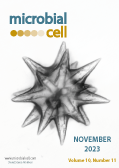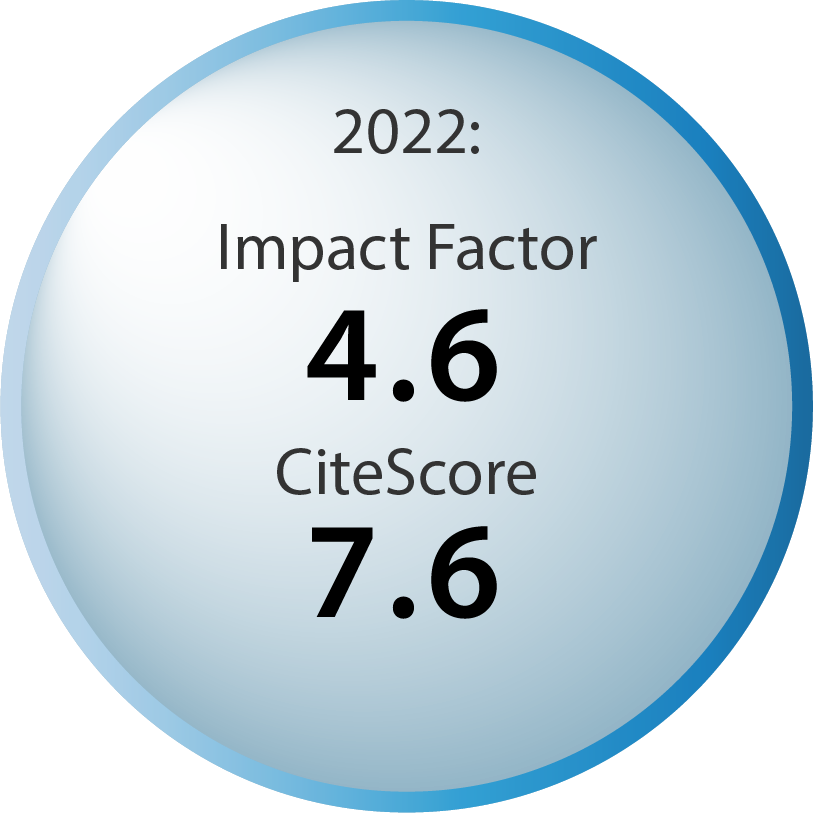Table of contents
Volume 10, Issue 11, pp. 233 - 260, November 2023
Cover: Diatome (fossile, 400x) found in Oamaru (New Zealand), Forresters Hill with an estimated age of 32-35 million years (late Eocene - early Oligocene). Specimen was prepared by A. Gleich and the picture shows a stack from 36 microphotos, each one with a slightly different focal distance (image retrieved from Flickr, posted by Picturepest and modified by MIC). The cover is published under the Creative Commons Attribution (CC BY) license.
Enlarge issue cover
Biofilm tolerance, resistance and infections increasing threat of public health
Shanshan Yang, Xinfei Li, Weihe Cang, Delun Mu, Shuaiqi Ji, Yuejia An, Rina Wu and Junrui Wu
Reviews |
page 233-247 | 10.15698/mic2023.11.807 | Full text | PDF |
Abstract
Microbial biofilms can cause chronic infection. In the clinical setting, the biofilm-related infections usually persist and reoccur; the main reason is the increased antibiotic resistance of biofilms. Traditional antibiotic therapy is not effective and might increase the threat of antibiotic resistance to public health. Therefore, it is urgent to study the tolerance and resistance mechanism of biofilms to antibiotics and find effective therapies for biofilm-related infections. The tolerance mechanism and host reaction of biofilm to antibiotics are reviewed, and bacterial biofilm related diseases formed by human pathogens are discussed thoroughly. The review also explored the role of biofilms in the development of bacterial resistance mechanisms and proposed therapeutic intervention strategies for biofilm related diseases.
Basal level of ppGpp coordinates Escherichia coli cell heterogeneity and ampicillin resistance and persistence
Paulina Katarzyna Grucela and Yong Everett Zhang
Research Articles |
page 248-260 | 10.15698/mic2023.11.808 | Full text | PDF |
Abstract
The universal stringent response alarmone ppGpp (guanosine penta and tetra phosphates) plays a crucial role in various aspects of fundamental cell physiology (e.g., cell growth rate, cell size) and thus bacterial tolerance to and survival of external stresses, including antibiotics. Besides transient antibiotic tolerance (persistence), ppGpp was recently found to contribute to E. coli resistance to ampicillin. How ppGpp regulates both the persistence and resistance to antibiotics remains incompletely understood. In this study, we first clarified that the absence of ppGpp in E. coli (ppGpp0 strain) resulted in a decreased minimal inhibition concentration (MIC) value of ampicillin but, surprisingly, a higher persistence level to ampicillin during exponential growth in MOPS rich medium. High basal ppGpp levels, thus lower growth rate, did not produce high ampicillin persistence. Importantly, we found that the high ampicillin persistence of the ppGpp0 strain is not due to dormant overnight carry-over cells. Instead, the absence of ppGpp produced higher cell heterogeneity, propagating during the regrowth and the killing phases, leading to higher ampicillin persistence. Consistently, we isolated a suppressor mutation of the ppGpp0 strain that restored the standard MIC value of ampicillin and reduced its cell heterogeneity and the ampicillin persistence level concomitantly. Altogether, we discussed the fundamental role of basal level of ppGpp in regulating cell homogeneity and ampicillin persistence.










